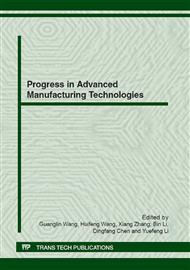p.457
p.462
p.467
p.472
p.476
p.481
p.485
p.490
p.495
Simulation and Optimization of Six-Bar Mechanism of Shaper Based on ADAMS
Abstract:
At first, mathematical movement model of six-bar mechanism of shaper was established with the vector analytic method. Then the geometrical model of six-bar mechanism of shaper was created by the simulation software ADAMS and kinematics simulation analysis on the model was carried out. The simulation results reveal the movement regularity and state information of plough head. By comparing the simulation results with theoretical calculation, the validity of this model and its simulation results were verified. Finally, through the parameterized modeling, how the length change of each rod of the mechanism to affect its performance was analyzed. Taking the plough heads working stroke as optimization objective, the optimal design of mechanism was realized. This method to use ADAMS to conduct simulation and optimization, on the one hand, greatly improves the research efficiency and shortens product development cycle, on the other hand, provides a theoretical reference for the actual mechanism design.
Info:
Periodical:
Pages:
476-480
Citation:
Online since:
August 2012
Keywords:
Price:
Сopyright:
© 2012 Trans Tech Publications Ltd. All Rights Reserved
Share:
Citation:


